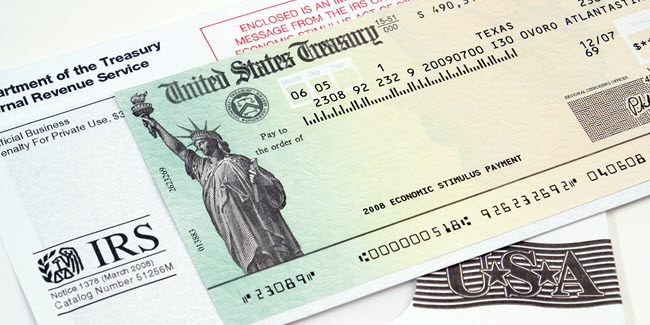Weekly Market Comment: Saturday, March 13th
One step backwards, two steps forward
Markets bounced, with the beaten up NASDAQ leading the charge after briefly reaching “correction” territory (a drop greater than 10%). Emotions flip from greed to fear and back pretty regularly, the past few weeks being no exception.
According to a Deutsche Bank survey, recipients of stimulus checks in America plan to spend, on average, 37% of it on investing in stocks (50% for people aged 25-34 years old, 40% for those aged 18-24). If those estimates are correct, it represent $170 billion being added to the stock market.
Helping the rebound was a tepid inflation reading with this week’s CPI in the U.S. Despite the short-term, inflationary pressures remain. Whether the Fed, along with other central banks, can keep inflation under control, remains to be seen. Several market pundits, including David Rosenberg, are making the case for higher inflation.
In Canada, the recovery in GDP has been stronger than expected and market watchers are expecting a Bank of Canada interest rate hike later this year or early 2022, despite the BoC indicating 2023. The BoC kept its key interest rate at 0.25% this week and, contrary to some expectations, kept its $4 billion per week quantitative easing program (read: buying of bonds to support the market), despite its view that recovery in Canada “is proving to be more resilient than anticipated to the second wave of the virus and the associated containment measures”. For example, they previously forecasted a January contraction that did not materialize.
What does the BoC view as the biggest risk to the recovery? The “uncertainty about the evolution of the virus,” including a more transmissible variants.
Make no mistake. More deadly variants of the coronavirus are already upon us, with an estimated 40% of new cases in Ontario involving the (probably) more deadly version. Efforts are underway to modify vaccines.
Fukushima’s 10-year anniversary
It’s hard to believe it was 10 years ago this week that a giant tsunami caused the worst nuclear disaster since Chernobyl in 1986.
Nuclear isn’t renewable like solar, wind and hydro power, but it is free of C02 emissions. In terms of indirect emissions, it is on par with wind and a third of solar. This is why the most firebrand of all environmentalists hasn’t ruled out nuclear (at least not rhetorically). Nuclear also has the advantage of being base-load, meaning its output runs 24/7/365 with predictable precision.
Germany, in a fit of national emotionalism, shuttered most of its nuclear power output, only to fire up coal plants that kill an estimated 1,100 more people from air pollution per year. Contrast that to four known cases of radiation exposure and one death from cancer last year. So let’s assume those numbers are underestimating reality not by 10 times but 100 times. Such an evidence-free assumption would still be considerably less death that what Germany unintentionally ushered in.
The single biggest lesson from Fukushima was not to build plants next to the ocean, a design move that was done to save money on cooling.
Unlike Chernobyl, there were no core explosions at Fukushima, which is why the vast majority of the 18,000 deaths caused by that fateful earthquake and tsunami was caused by falling buildings and drowning, not radiation.
Beware of hot stocks filled with hot air
As we have pointed out before, one challenge with the SPAC craze is that it is bound to attract lower quality operators and low quality companies.
There are already more SPACs IPOing this year than all of last year. But even the more credible SPAC operators, like the Canadian hedge-fund billionaire, Chamath Palihapitiya, can’t be guaranteed to be effective. He was heavily criticized after disclosing the sale of his personal stake in Virgin Galactic Holdings (symbol SPCE), the SPAC that took Virgin Galactic public. Yes, Sir Richard Branson’s company.
But, according to the New York Times, projections of $31 million in revenues last year and $210 million this year, the reality is that it did “not generate significant revenue” last year, the company itself admitted recently.
Palihapitiya has over a million Twitter followers and a lot of them invest in his deals. When the disclosures were made, many of his fans jumped ship (a spaceship, presumably), sending shares down from the $60 range to below $30 this week.
Chasing hot stocks – even deals run by famous billionaires - can be perilous to one’s investment health.
Noteworthy links:
- What’s new in the 3rd Covid stimulus package?
- Alaska becomes the first state to open vaccinations to everyone aged 16 or more
- Young people looking to spend almost half of their stimulus check on stocks: Survey
- Changing your mind can make you less anxious
- Artist Banksy, inspired by Bob Ross, paints prison escape scene on a prison wall
- Winners of the World Nature Photography Awards
Musings Beyond The Markets
From William J. Bernstein’s latest book “The Delusions of Crowds: Why people GO MAD in GROUPS”, where he explains the neuro causes of why investors chase hot investment opportunities even at irrational prices:
While the ancients and Mackay were well acquainted with human irrationality and popular manias, they could not know their precise biological, evolutionary, and psychosocial wellsprings. Mackay, for example, must have asked himself exactly why groups of people, from time to time, chase the same ludicrously overpriced investments en masse.
Today, we have a much better idea of how this happens. In the first place, financial economists have discovered that human beings intuitively seek out outcomes with very high but very rare payoffs, such as lottery tickets, that on average lose money but tantalize their buyers with the chimera of unimaginable wealth. In addition, over the past several decades, neuroscientists have uncovered the basic anatomic and psychological mechanism behind both greed and fear: the so-called limbic system, which lies close by the vertical plane that divides the brain between its right and left hemispheres. One symmetrically placed pair of the limbic system’s structures, the nuclei accumbens (singular: nucleas accumbens), lie approximately behind each eye, while another pair, the amyghalae (singular: amygdala), sit just under the temples.
Using functional magnetic response imaging (fMRI), researchers have found that the nuclei accumbens fire not only with reward, but even more intensely with anticipation, be it culinary, sexual, social or financial. In contrast, the amygdalae fire with disgust, fear, and revulsion. If, for example, you adore your aunt Flo’s lasagna, your nuclei accumbens and their connections will fire ever more rapidly on the way over to her house, and likely peak just as the aroma wafts from the serving dish. But as soon as the first bite is taken, their firing rate decreases, and if your aunt informs you upon arrival that she’s burned the dish, they will almost completely cease firing.
The benefit of an active anticipatory circuitry seems obvious; Mother Nature favors those who anticipate and strive, whereas the enjoyment of satiation, once achieved, offers little evolutionary advantage. And few things likely stimulate the nuclei accumbens as does the knowledge that some of those around us are becoming effortlessly wealthy. As economic historian Charles Kindleberger observed, “There is nothing so disturbing to one’s well-being and judgement as to see a friend get rich.”
Word of the Week
pestilence (n.) – a fatal epidemic diseases, especially bubonic plague. “He who desires, but acts not, breeds pestilence.” – William Blake




